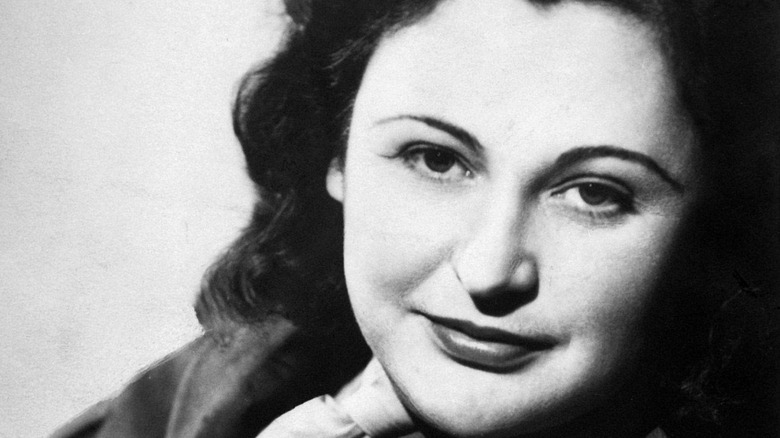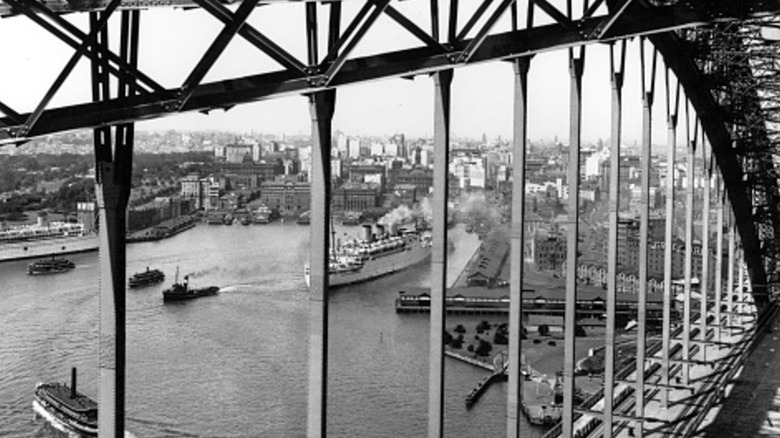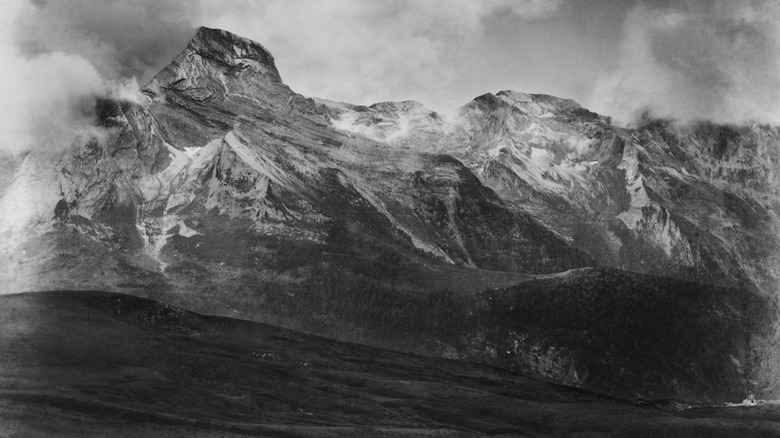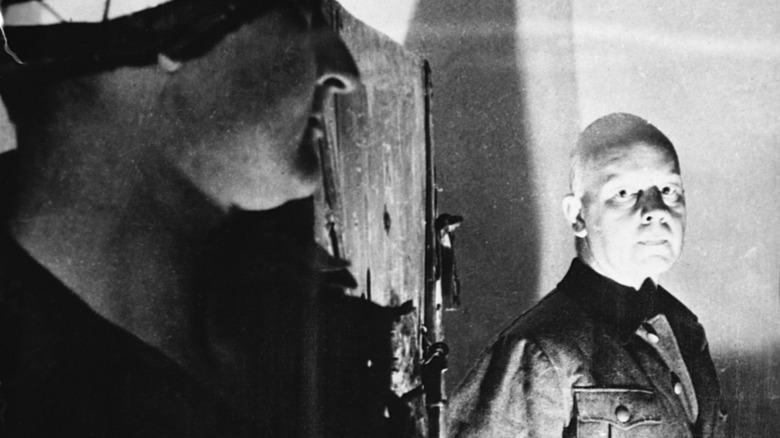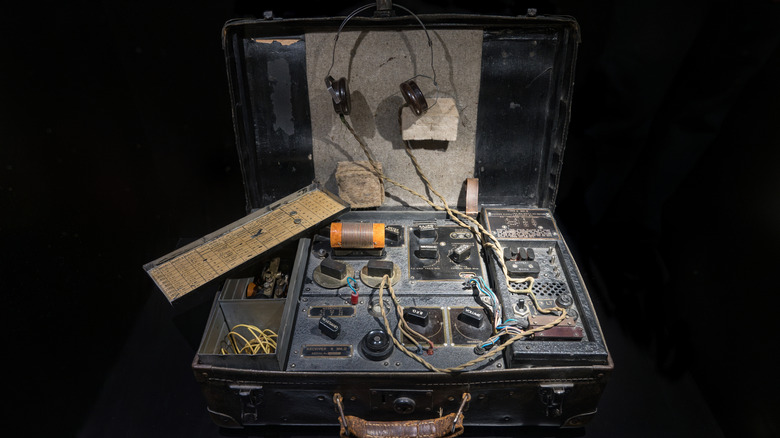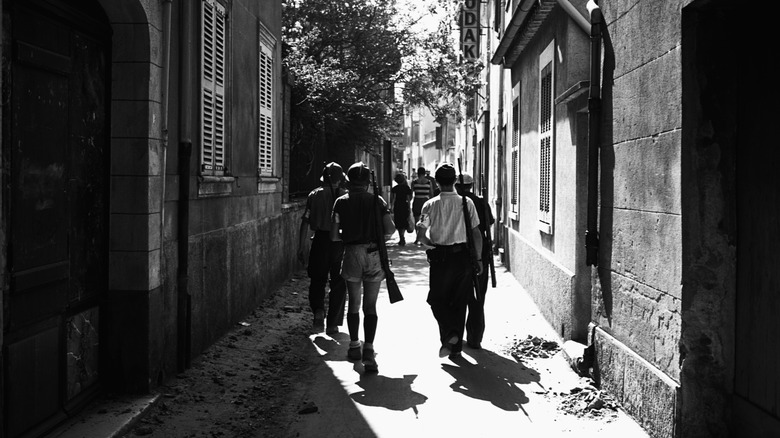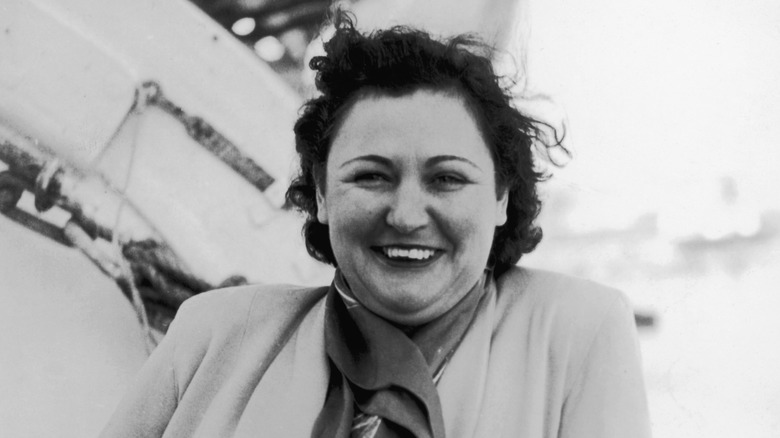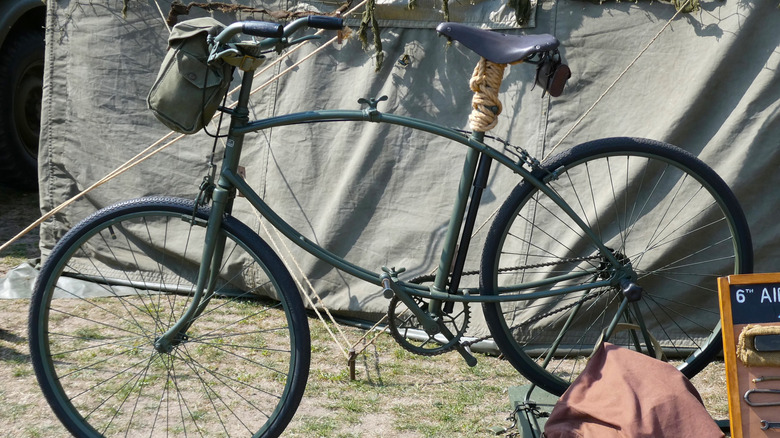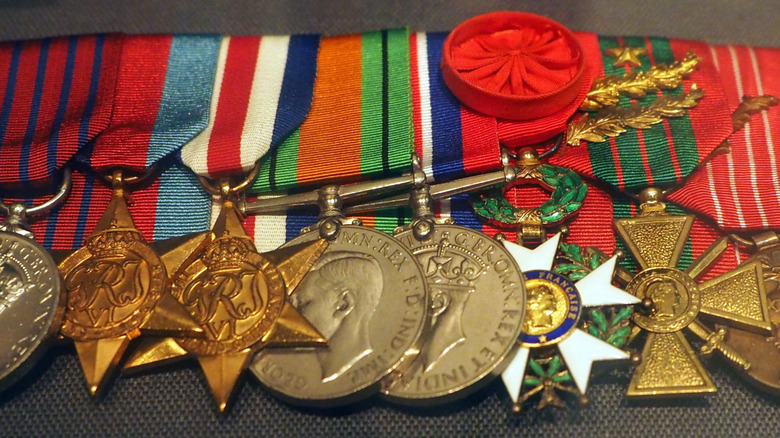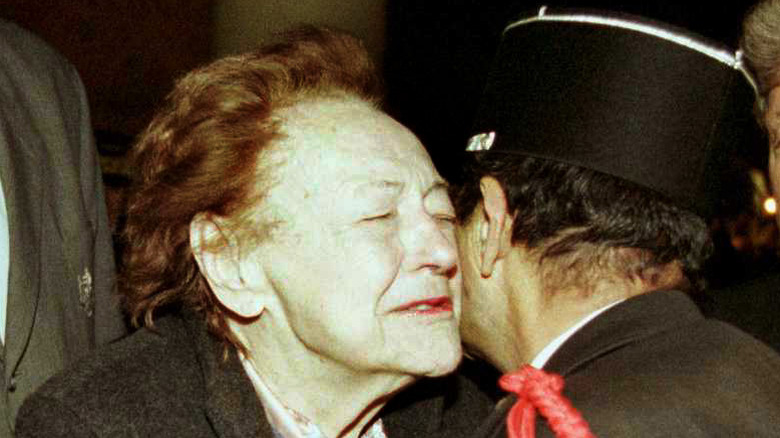Nancy Wake: WWII's Most Wanted Resistance Fighter
When asked to think of the most wanted resistance fighter of World War II, you might picture a defiant French person, certainly a man, perhaps wearing a beret and carrying all manner of concealed messages and weapons to right against the encroachment of Nazi Germany. The beret part isn't all that off, actually — French resistance fighters called the Maquis actually did sport the stylish headgear — but the gender part is all wrong. One of the most wanted resistance fighters of the whole war was actually a woman named Nancy Wake.
Wake was, upon first glance, an unlikely candidate. She was an Australian woman who'd run away from home, worked as a journalist, then joined French society, where she established herself as a lover of the finer things in life — and as a very ardent opponent of the Nazis. She eventually made it clear that she was not afraid to fight for what she believed was right, even if there was some cursing (and worse) along the way. And though there are amusing, colorful tales of her wartime exploits, there was also a decidedly dark side to her resistance work. As she told interviewer and artist Mick Joffe, "There had been nothing violent about my nature before the war yet the years would see a great change. The enemy made me tough. I had no pity for them nor did I expect any in return." That helped her become one of the worst nightmares of the Nazis during the war.
Wake had a difficult childhood
Wake didn't exactly have an easy start to her life. Born in Wellington, New Zealand, Wake was 4 years old when she moved to Australia with the rest of her family (some sources indicate she was 2). Not long after, her father Charles abandoned the family, leaving Wake's mother Ella alone to raise six children — of whom little Nancy was the youngest. Even worse, Charles sold the family home with practically no warning, leaving Ella and the children scrambling to find housing in an unfamiliar country. As Wake would later tell The Telegraph in characteristically blunt fashion, "I adored my father. He was very good looking. But he was a b*****d."
Things weren't exactly better with her mother and siblings, as Wake recalled a tense home environment that pushed her to run away when she was 16. For two years, she reportedly lived and worked under a different name in a town far from the family home in Sydney, though she moved back when she legally became an adult and wouldn't have to return to her mother's house. Things took a fateful turn when an aunt back in New Zealand died, leaving a bequest that gave Wake enough money to go abroad. After initially traveling to the United States, she landed in London and began studying journalism, which soon took her to Paris in the 1930s — just as the Nazis were beginning to rise.
Her career as a journalist took her to Europe
Wake openly admitted to enjoying the bustling nightlife scene of Paris when she wasn't hard at work. Getting there did involve a bit of deception, however, as she allegedly told a Hearst newspaper executive that she knew ancient Egyptian — conveniently, the exec had a special interest in that very subject. Only, Wake was bluffing and instead scribbled gibberish on a piece of paper to demonstrate her "knowledge" of hieroglyphics. The Hearst man reportedly fell for it (or perhaps gave Wake a bemused pass) and hired her.
On a trip to Vienna, Austria, she recalled seeing the Gestapo rounding up Jewish people for no known reason other than to publicly beat them. In multiple interviews, Wake marked this out as a pivotal point when she fully set herself against the regime threatening to take over Europe. "My hatred of the Nazis was very, very deep," she said (via The Washington Post). While France was still under its own power, Wake also began talking to refugees fleeing the existing Nazi regime in Germany and Austria, further cementing her stance.
At the same time, she was settling into European life, having married wealthy businessman Henri Fiocca in 1936. The pair lived in the southern French city of Marseilles, where she was at first rather comfortably situated as Madame Fiocca. But, in 1940, the Nazis and their Italian allies invaded France, taking Paris in June and forcing the French government's surrender soon after.
With the arrival of the Nazis, Wake began to work with the Resistance
With the Nazi takeover of more than half of France and the installation of the puppet Vichy government in the remainder, Wake found herself in enemy territory. That served only to motivate her all the more, and she soon began working with the local resistance network as a courier, then escorting people through Nazi-held territory to the relative safety of Spain. These included refugees as well as downed Allied soldiers who found themselves stranded. But getting them to safety was no simple jaunt to the border.
Instead, Wake and her travel companions often had to make at least part of the journey on foot, often through hostile territory that required serious physical exertion (with the occasional attack from Nazi or Vichy forces while they were at it). As Wake told an admiring interviewer (via Coffs Collections), it was hardly glamorous. "Daring? Bloody tiring, if you tell me. Have you ever been over the Pyrenees?" she said. Once in Spain, British officials would send a car up from Barcelona to retrieve people.
Along the way, Wake took advantage of her gender and social status to escape dangerous situations. "A woman could get out of a lot of trouble that a man could not," she recalled (via The New York Times). She turned that sexism to her advantage, even using her looks and charisma (with the addition of a fortifying beverage, sometimes) to charm her way through checkpoints while couriering sensitive documents.
Wake gained infamy for escaping, but time began to run out
At some point, the Gestapo realized that there was an especially sly member of the Resistance working right under their nose. They weren't entirely sure who it was, though it had become increasingly obvious that this person had an uncanny ability to escape tight situations. This individual had escaped identification for a good, long while, but the circle was closing in. Perhaps it was a woman, some wondered. The Gestapo eventually nicknamed the still-unidentified agent the "White Mouse." Things became even more tense when they placed a 5 million-franc award on her capture (that would be over €133,000,000 today, or nearly $157,000,000 USD).
Wake was finally tipped off by a friendly café owner who told Wake he thought she was being followed. Though reluctant to leave her husband, Wake saw the situation had reached a tipping point. Her escape over the Pyrenees wasn't an easy trip, however. Wake was turned back multiple times by bad weather, then was detained by Vichy authorities. They interrogated her for hours. As she wrote in her memoir, "The White Mouse," Wake was finally rescued when a fellow Resistance worker showed up and claimed she was his mistress. Even then, it took many attempts for her to cross the heavily patrolled border, walking at night, dealing with a scabies infection and a blizzard that plagued her hike to safety. Even then, Spanish authorities detained Wake's group, during which time she claimed to be a friendly American until British forces finally collected her.
She joined a British special unit
Having fled France in 1943, Wake left Spain and eventually landed in Britain. However, she didn't intend to stay there for the duration of the war. Instead, Wake joined the Special Operations Executive (S.O.E.), a sabotage and espionage organization founded in 1940. She had originally attempted to join the Free French resistance group led by Charles de Gaulle (who himself would go on to survive an alarming number of assassination attempts). However, Wake was rejected. This made her entry into the S.O.E. tricky, at least until she spoke directly to the organization's French division leader. Documents from this time show that S.O.E. officials eventually came to believe that Wake was suited for more clandestine work, in part because of her determination, humor, and charisma.
Wake would not be able to rely on charm alone, however. During her S.O.E. training, she also demonstrated keen shooting skills and a willingness to engage in close-quarters combat. In later interviews, she would also claim that part of the training involved constantly drumming the outer edges of her hands against a desk to toughen them up — which she said proved useful when encountering German soldiers. That opportunity would come quickly, as Wake was part of an S.O.E. team that parachuted into Nazi-held France in April 1944. Their mission was to shore up the Resistance and hamper the Nazis ahead of the D-Day invasion planned for that June.
Wake claimed to have killed enemy combatants
While working as a member of the French Resistance group known as the Maquis, Wake was very definitely fighting in the midst of a brutal ongoing war. And while it's hard sometimes to confirm details from a warzone, much less from a group of fighters who are intentionally working to remain secret, it's no secret that death is part of this environment. Wake herself later said that she wasn't fond of killing, but also that she did what she had to do in order to survive. That included dispatching a German sentry at an arms factory, using hand-to-hand combat techniques she had learned in her S.O.E. training. As she told The Australian, "[T]his was the only time I used it — whack — and it killed him all right. I was really surprised."
The other death often linked to her did not come as a surprise, however. In this incident, Wake claimed to have apprehended three French women believed to be spies for the Nazis. After interrogating them, she released two but determined the remaining woman really was a traitor and ordered her execution. "I was not a very nice person," Wake said of this experience. "And it didn't put me off my breakfast. After all, she had an easy death. She didn't suffer. I knew her death was a lot better than the one I would have got" (via The New York Times).
She claimed to have participated in raids and other attacks
For much of her time working with the Maquis, Wake was in charge of organizing Allied air drops and distribution of the dropped weapons and other supplies amongst Resistance fighters. However, she said that she was at least occasionally part of the action in a more direct fashion, as when she claimed to have participated in a raid on German headquarters in Montluçon. Wake said that, during this attack, she personally threw a grenade into the building, though, of course, she managed to escape before it detonated.
Distributing weapons was hardly an easy job, either. Accounts of her efforts there maintain that Wake delivered supplies in the midst of pitched battles between the Maquis and the Germans, with one incident in which an observation plane directed gunfire at her vehicle after a round of deliveries. Of course, there are some who doubt these accounts, or at least the romanticized versions that sometimes spring up around Wake and other S.O.E. personnel. Historian Max Hastings sniffed that "Most accounts of wartime S.O.E. agents, particularly women and especially in France, contain large doses of romantic twaddle" (via "The Secret War"). Yet, neither is it fair to expect resistance fighters in the midst of a grueling, oftentimes gruesome offensive to mark down every detail, and other facts of Wake's accounts — such as her S.O.E. documentation — definitively check out.
Wake both used and fought against gender stereotypes
Before she was forced to flee France, Wake had already learned that her gender could be an asset to her Resistance work. "I'd see a German officer on the train or somewhere, sometimes dressed in civvies, but you could pick 'em," she told The Australian. "So, instead of raising suspicions I'd flirt with them, ask for a light and say my lighter was out of fuel." That was enough for a while to allay suspicion, though even Wake's luck and wit could only hold out for so long, leading to her escape over the Pyrenees.
By 1944, having parachuted into occupied France, Wake's gender was again both asset and annoyance. Upon parachuting into the territory, she reportedly became entangled in a tree. Resistance leader Henri Tardivat finally found her and remarked that he hoped "that all the trees in France bear such beautiful fruit this year." Wake told him to "Cut out that bull***t and get me out of this tree" (via "Mission France"). When encountering other skeptical Maquis, Wake set and won drinking contests against them. As Major John Farmer, a fellow resistance fighter, recalled to The Guardian, "I had never seen anyone drink like that, and I don't think the maquis had either. We just couldn't work out where it all went." Another fighter said, "She is the most feminine woman I know until the fighting starts. Then she is like five men" (via The Washington Post).
One of her most famous exploits involved a bicycle
For all of the drama of war and the colorful incidents in her story, one of Wake's most famous wartime feats involved a plain old bicycle (echoing the exploits of some lesser-known heroines of World War II). But, of course, this was no gentle cycle through the park. After a German attack damaged communications equipment vital to the Resistance effort, Wake undertook an epic journey to reestablish contact and keep messages moving. Over the course of three days, she said that she cycled 500 kilometers (about 310 miles) through dangerous enemy territory. Wake had to keep a low profile, reportedly resorting to sleeping in haystacks and other out-of-the-way spots to avoid capture.
In "The White Mouse," Wake vividly described the pain of keeping the bike going towards the end of her journey, though she knew that if she got off the cycle, she wouldn't be able to keep going. When she finally returned to safety, her compatriots greeted her joyfully, but Wake's reaction was far different. "I cried," she told The Australian. "I couldn't stand up, I couldn't sit down. I couldn't do anything. I just cried." But, despite the temporary emotional and physical setback, Wake's mission successfully reopened communications with the Allies, and she was soon ready to continue fighting. She would eventually point to this mission as her proudest moment of the war.
She accumulated and eventually sold many of her medals
After the war, Wake did her best to return to civilian life. It was only at this point that she learned of her husband's death at the hands of the Gestapo, which remained a point of grief for her well into her golden years. She did remarry and return to Australia, where she ran for political office multiple times, though she never quite succeeded in winning an election.
She did get awarded plenty of medals and other honors after the war, including France's Croix de Guerre, the Medaille de la Resistance, and becoming a Chevalier de Legion d'Honneur. Meanwhile, the U.S. gave her a Medal of Freedom and the British the George Medal. Australia, however, dilly dallied over awarding her any similar honors, perhaps because she technically wasn't an Australian citizen. It wasn't until 2004 that it finally gave her the Companion of the Order of Australia.
Wake wasn't all that emotionally attached to her medals, however. In the '90s, she sold most of them for $156,000, raising money for her own upkeep (by the time Australia got around to officially honoring her, she had already moved to the U.K. anyway). Her reasoning, as colorful as ever, was that "There was no point in keeping them. I'll probably go to hell and they'd melt anyway" (via The Guardian).
A hotel and a prince footed Wake's bills in her final years
In 2001, Wake moved from Australia to London, where she stayed at the Stafford Hotel with the intention of living out the rest of her life there. She became a well-known fixture, to the point where she had a dedicated seat at the bar (labeled "Nancy's chair") where she would often be found sipping her drink and regaling guests with her stories. Though her money ran out, hotel management never evicted her, perhaps because Prince Charles — this is well before we entered the new Carolean age of King Charles III — agreed to pay some of her expenses. A surprised Wake said she'd never asked for his financial help, though clearly she proved admirable and interesting after a visit to St. James's Palace (where she reportedly turned down tea in favor of a stronger beverage and took a dessert home in her purse).
However, a heart attack in 2003 prompted Wake's move from her beloved Stafford Hotel to the Royal Star & Garter care home, where her costs were covered by the Australian government. She remained there until 2011, when she died aged 98. Two years later, as Wake herself had requested, her ashes were scattered near the French village of Verneix, in the region where she was active during the war. As Wake had also reportedly directed, those at the ceremony then went to the mayor's office for a reception ... complete with drinks.
